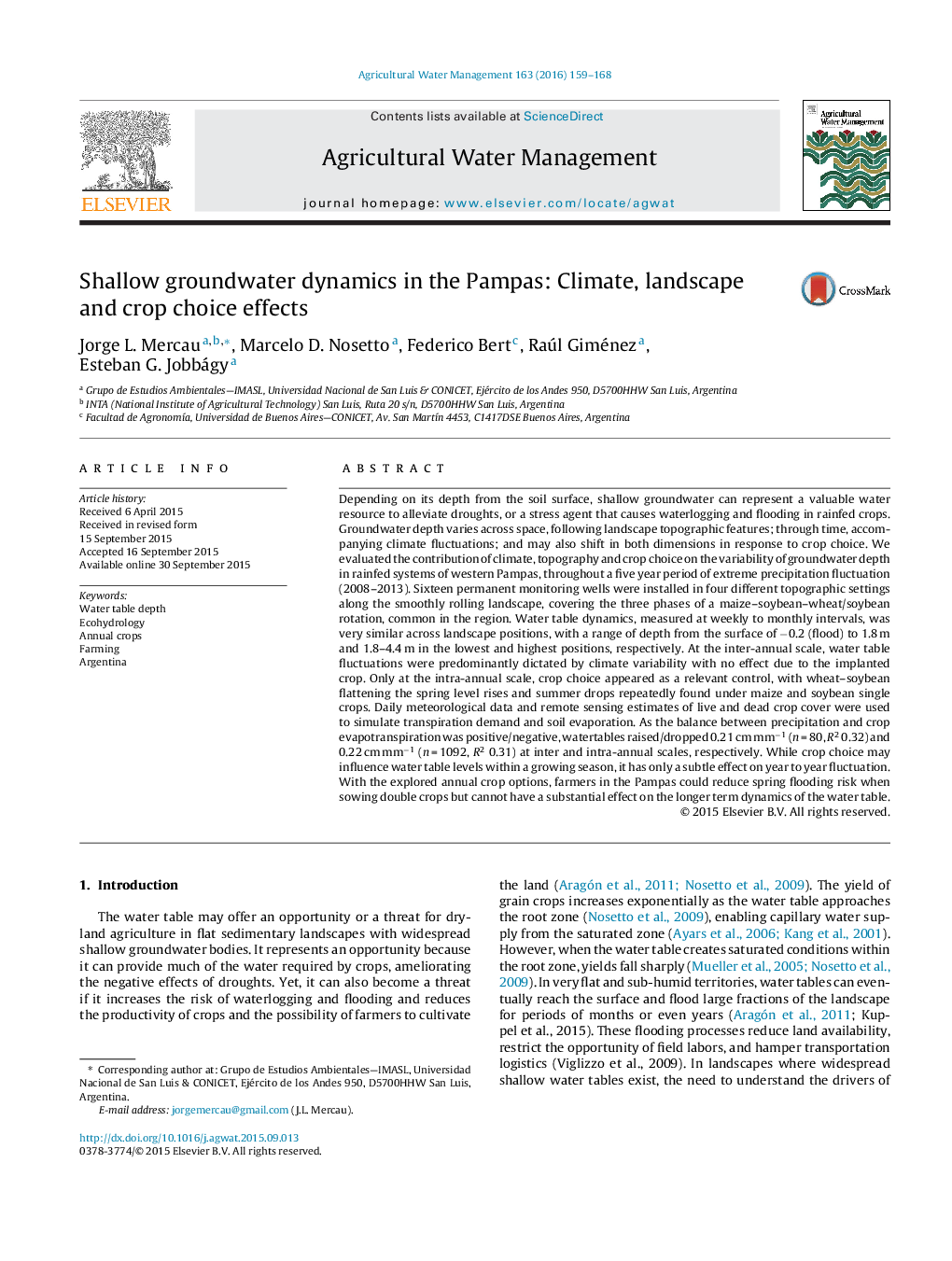| کد مقاله | کد نشریه | سال انتشار | مقاله انگلیسی | نسخه تمام متن |
|---|---|---|---|---|
| 4478346 | 1622916 | 2016 | 10 صفحه PDF | دانلود رایگان |
• We assessed climate, topography and crop effects on water table level dynamics in the Western Pampas.
• Rainfall was the main determinant of seasonal and interannual water table shifts.
• Crop choice permits a partial control on seasonal groundwater dynamics.
• Topography modulates the absolute water table position but not its relative changes.
• Current crop rotations are not sufficient to control inter-annual water table shifts.
Depending on its depth from the soil surface, shallow groundwater can represent a valuable water resource to alleviate droughts, or a stress agent that causes waterlogging and flooding in rainfed crops. Groundwater depth varies across space, following landscape topographic features; through time, accompanying climate fluctuations; and may also shift in both dimensions in response to crop choice. We evaluated the contribution of climate, topography and crop choice on the variability of groundwater depth in rainfed systems of western Pampas, throughout a five year period of extreme precipitation fluctuation (2008–2013). Sixteen permanent monitoring wells were installed in four different topographic settings along the smoothly rolling landscape, covering the three phases of a maize–soybean–wheat/soybean rotation, common in the region. Water table dynamics, measured at weekly to monthly intervals, was very similar across landscape positions, with a range of depth from the surface of −0.2 (flood) to 1.8 m and 1.8–4.4 m in the lowest and highest positions, respectively. At the inter-annual scale, water table fluctuations were predominantly dictated by climate variability with no effect due to the implanted crop. Only at the intra-annual scale, crop choice appeared as a relevant control, with wheat–soybean flattening the spring level rises and summer drops repeatedly found under maize and soybean single crops. Daily meteorological data and remote sensing estimates of live and dead crop cover were used to simulate transpiration demand and soil evaporation. As the balance between precipitation and crop evapotranspiration was positive/negative, watertables raised/dropped 0.21 cm mm−1 (n = 80, R2 0.32) and 0.22 cm mm−1 (n = 1092, R2 0.31) at inter and intra-annual scales, respectively. While crop choice may influence water table levels within a growing season, it has only a subtle effect on year to year fluctuation. With the explored annual crop options, farmers in the Pampas could reduce spring flooding risk when sowing double crops but cannot have a substantial effect on the longer term dynamics of the water table.
Journal: Agricultural Water Management - Volume 163, 1 January 2016, Pages 159–168
